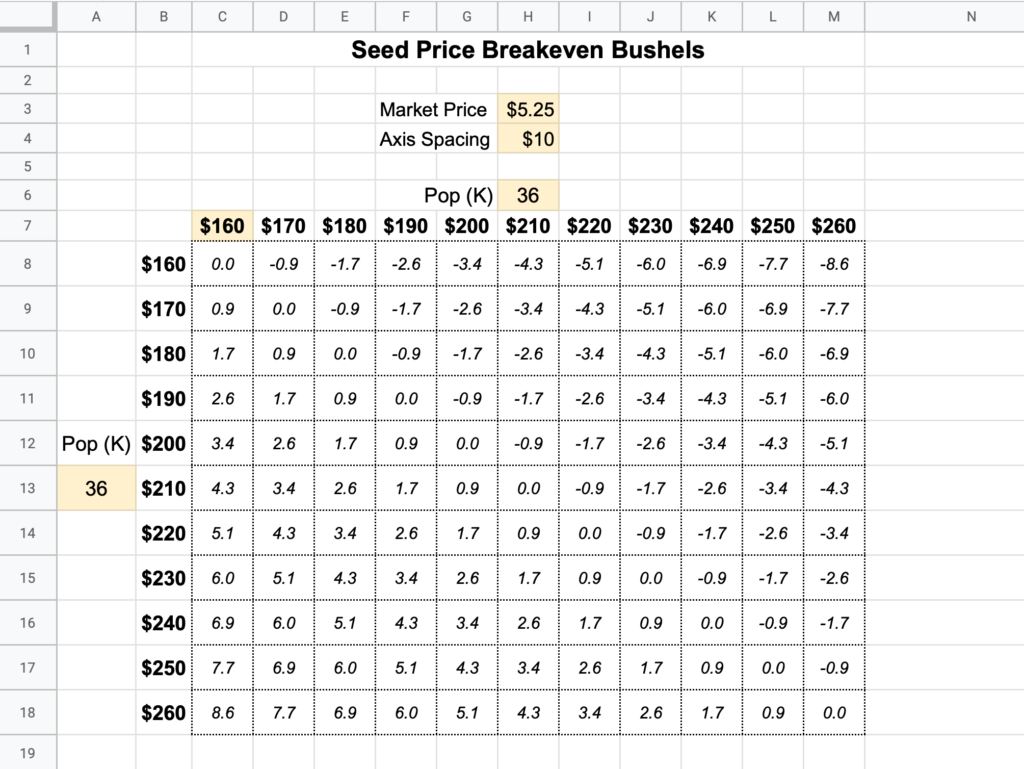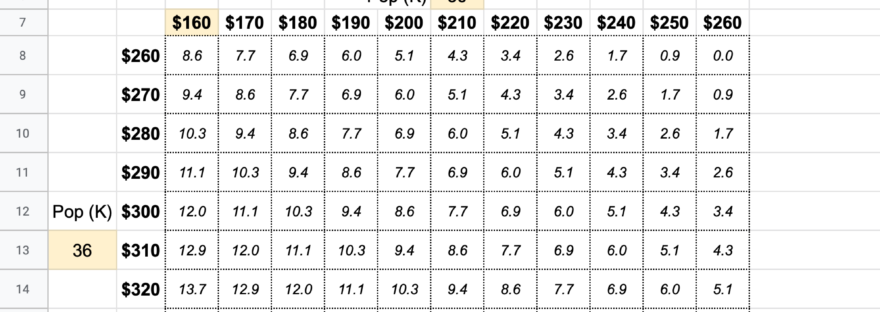Each winter brings with it another seed buying decision and thus another opportunity to make some spreadsheets to overanalyze said decision. I continue to look for better ways to compare profitability between differing yield/price seed brands, so I made this simple matrix spreadsheet as a quick reference guide for breakeven yields on differing seed prices.
These breakeven bushel calculations are pretty straightforward to do, but it always feels annoying to have it as a one-off calculation for a specific pair of seeds and takes some time to do in the moment. The idea of this matrix is to be a quick lookup you can do on any two prices in the middle of a seed discussion.

The input fields are highlighted in yellow. You specify:
- Market price of the commodity
- How many dollars each row/column should be spaced
- Price (per bag) to set low end of horizontal axis
- In the example above, cell B8 points to the value of cell M7, so an adjustment to the $160 starting price will also flow over to the vertical axis.
- Seeding population for each axis
The resulting numbers in the matrix represent how many bushels/acre it would take for the seed price on the left to be more profitable than the seed price on the top.
Alternate Configuration
The above example is good for huge variances in price (like between the $200 and $300 area) but it assumes both prices won’t be above or below $260.
For smaller variations that don’t safely reside on one side or the other of a middle price, consider setting cell M8 equal to C7. This will give you a symmetrical matrix with less range coverage, but more flexibility.

In this mode it will be less obvious which axis is the comparison variety, but you can look to the extreme corners in the upper right or bottom left to get your bearings if you forget the format.
Download
Here’s a link to a copy of this in Google Sheets. I’ve primarily used this for corn, but the spreadsheet also includes a soybean tab which uses a 140K seeds / unit calculation instead of 80K.

